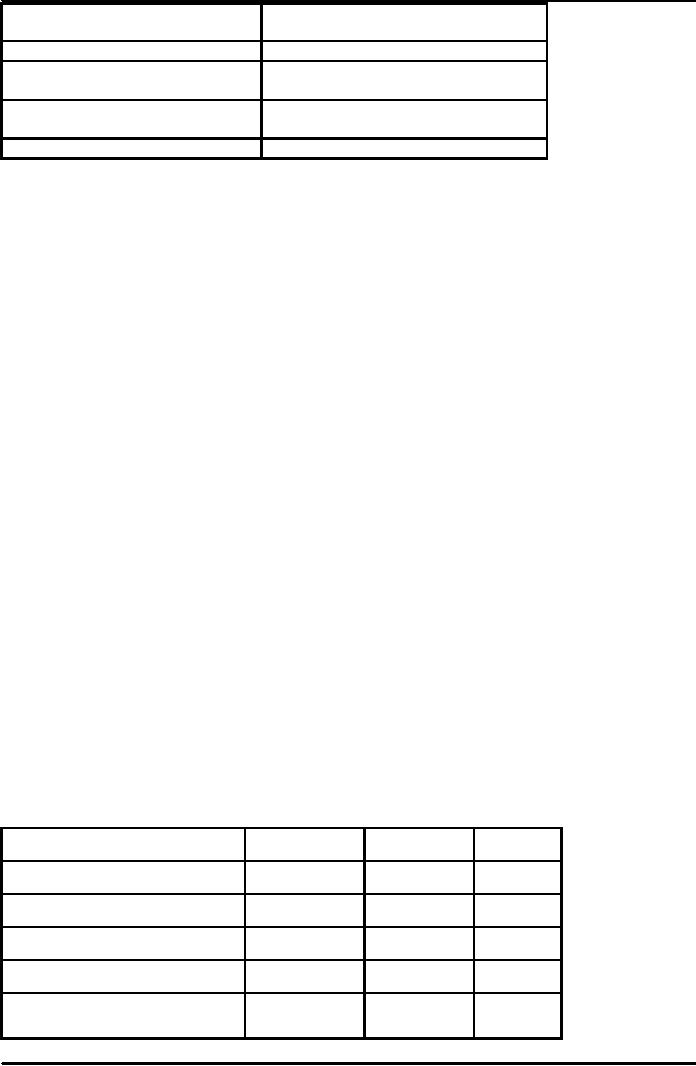 |
INTERCULTURAL COMMUNICATION:Education, Law and Regulations, Economics |
| << INTERCULTURAL COMMUNICATION |
| INDIVIDUAL CULTURAL VARIABLES:Acceptable Dress, Manners >> |

VU
Lecture
13
INTERCULTURAL
COMMUNICATION
A
Concept of Culture
Culture
refers to the behavioral characteristic typical of a
group this definition implies
that
communication,
oral and nonverbal within a
group also are typical of
that group and are
unique.
Ethnocentrism:
judging other group or
countries by the cultural standards, of
your group.
Cultural
generalizations applicable to an entire
national are impossible.
Knowing core
characteristics
of a country are basic to better
international communication.
An
Intercultural Communication
Model
Studies
have long determined that
all of us are more comfortable
with persons we know and
who
hold
similar beliefs. Lets look
at the figure:
Major
cultural overlap: 2
little
cultural overlaps
countries
might speak
Country
1
same
language dress
similarly.
Use common
form
of address
Country
2
Country
4
Some
cultural overlap
Country
4
Core
similarities basic human
characteristics
common to all of us.
Physical,
anatomical traits
are
common
to humankind regardless of
race
or cultural differences, acts
of
walking,
love of family etc.
An
Intercultural Communication
Model
United
States
Other
Cultures
Concern
with diversity
Less
tolerance for diversity
Tendency
to be obsessed with time
time
is flexible
Expect
answers, quickly to faxes,
Fax and E-mail slowly
increasing in developing
letters,
or email
countries
Few
vacation periods
Many
vacation days (about 17 in some
countries).
Legalistic
letter
more
informal; a handshake is as good as a
letter
Early
starting time for work
start
working later in the
day
An
Intercultural Communication
Model
35

VU
United
States
Other
Cultures
Much
use of slang
less
use of slang
Prefer
deductive: it gets to the point prefer
inductive: it is less arrogant
more
quickly.
Prefer
paragraph headings and
visual Prefer bullets or
numbers
divisions
Rank
is less important
rank
is important.
An
Intercultural Communication
Model
Ethnic
diversity within a country plays a
part
Before
drawing conclusions form cultural data,
it is necessary to consider many
factors: a single cause
rarely
produces
a valid conclusion.
An
Intercultural Communication
Model
National
Cultural Variable
While
communicating, the message sender
and the receiver are both
affected by external and
internal
stimuli.
Communicating with business people in a
foreign country you must
realize that overall
national and
individual
cultural differences within the culture
further affect these stimuli.
An
Intercultural Communication
Model
Following
are the global or macro constrains
and variable that communicators
must face when
working
with
foreign receivers of their
messages.
Some
National Variables Individual Cultural
Variables
Education
Time
Regulation
Space
Economics
Food
Politics
Accepted
Dress
Social
Norms
Manners
Language
Decision
Making
Education
Many
managers in foreign countries
are not very well educated.
Most Asian and Chinese
managers have had
a
less formal education than American
and European managers.
Education
levels of Chinese, Asian, and US
Mangers
`
Less
than high school
5.4
2.5
0.1
High
school graduate
31.8
12.4
3.2
Some
college
34.5
19.4
16.9
Undergraduate
degree
27.6
65.4
79.8
Postgraduate
degree
0.7
25.0
30.0
36

VU
Education
Before
drawing conclusions from date, it is
necessary to consider many
factors. Percent of
managers
recommending
specific courses as very impotent
preparation for general
management.
Course
US
Asian
China
Oral
Communication
79.5%
71.8%
8.6%
Written
Communication
78.0
69.7
8.0
1.
Attitudes towards
education
a.
What is the level of education of middle
managers?
b.
To what degree is education of women supported in the
country?
c.
Does education constitutes a significant
portion of the national
budget?
Law
and Regulations
In
both the developed and developing
nations, various government regulations
affect business
communications
and the sale of products.
For example advertising directed at
children is restricted in the
United
States, Canada, and
Scandinavia; also,. Other
countries, such as France,
Mexico, and the Province of
Quebec,
have a restriction on the use of foreign
languages in advertisements.
In
some Muslim countries fashion
magazines are not allowed in
many countries, and cosmetic
makeup is
also
prohibited.
1.
Laws and regulations: degree
of formality
a.
To what extent are the laws of the
country codified?
b.
Is there uniform enforcement for the
laws and regulations of the
country?
c.
Are the laws and regulations
of your country accepted and
enforced?
Economics
Availability
of capital and transportation
and the standard of living
per capita vary from nation
to nation.
The
opportunity to borrow money, the rate of
inflation, and the exchange
rates influence business and
a
country's
ability to communicate concerning
that business.
In
the US free enterprise system,
competitors usually set their
own prices. In contrast,
OPEC (Organization
of
Petroleum Exporting Countries), as a
Cartel, sets oil
prices.
Some
Japanese businesses check
with the government before initiating major
production and
trading
changes.
Economics:
Past history and projections
a.
Which economic changes have
occurred within the past 5
years that will affect the
future?
b.
Is the government supportive of the economic
changes occurring?
c.
How welcome are outside
investors in your host
country?
Politics
Even
concepts of democracy will vary as
interpreted in Korea, the Philippines, or Great
Britain. The
sweeping
political changes in government will
affect future business
relations.
The
event such as antigovernment demonstrations,
arrests, assassinations, elections,
exile, general
strikes,
guerrilla
warfare, government crises, revolutions
and riots are
important in determining the stability of
a
country.
Politics:
37

VU
a.
which political changes have
occurred within the past 5
years?
b.
how supportive is the government of
outside investors? of joint
ventures?
c.
what are the protocols, the conventions individuals
must respect in the host
country?
Religion
Be
careful of religious beliefs within
foreign countries. Although
some basic beliefs overlap,
there some
major
differences In connection with religion
there is great need for
tolerance. Buddhism, Hinduism,
and
Moslem
religions are found in many
parts of the world, affecting the values
(and attire) of people professing
these
faiths. For instances, these
three religions forbid consumption of
alcohol;
Religious
holidays affect international communication,
interrupting work schedules or
delaying responses to
requests
Be
aware too that religion
can affect the status of women;
their positions within an economy
and even their
buying
patterns and habits of
dress.
Religion:
Homogeneity and diversity of belief
structure
a.
Are you aware of the major religious
beliefs that could affect
your business
relationships?
b.
will the religious holidays affect your
rhythm of conducting business?
c.
what personal behavior is acceptable
and nonacceptable?
Social
Norms
In
various ways any national
environmental constraints
education, law and
regulations, economics,
politics,
religion affect a nation's social
norms. In many countries a
male line of the family
profoundly
influences
some business decisions.
Decisions, buying patterns,
pooling of resources, special
interests
affect
behavior and business
communication.
Beyond
the immediate family a bond
may exist between persons,
based on caste, class, age,
or even special
interests.
Be aware of a nation's social
norms.
Social
Norms: importance of
family, influence of past colonial
influences:
a.
are you aware of the social
hierarchies of the country?
b.
Is there a rank order of importance
for participants at meetings?
c.
Who will really make the
business decision?
d.
Which country's influence is still evident after
previous colonial control?
Language
An
important constraint that undergirds
all the preceding variables is
language. Obviously, unless
both
sender
and receiver understand a common
language, the opportunities for
successful business
communication
are significantly limited.
Language
English
is a world language and to a major
extent the language of business.
Language
problems are often core to
communication misunderstanding.
Language:
Use of
English and other languages
used in business
relationships:
a.
Is it necessary to have an interpreter at
business sessions?
b.
is English understood at the oral or written
level?
c.
Is there a protocol to follow
for formal and informal
communication.
Individual
Cultural Variables
He
or she exhibits a unique lifestyle of personal
habits and ethnic diversity.
Thus, within each culture,
on
the
micro and more personal level,
are differences in verbal and
nonverbal cues expressed
through varying
38

VU
concepts
of time, individual speech, food,
acceptable dress, managers at
home and at work,
decision-making
patterns,
and other nonverbal
variations.
Time
(Chronemics)
Persons
in Latin America and the Middle
East treat time more casually
then do Americans,
prefer
promptness.
Germans are time-precise. In
Latin America and in Buddhist
cultures you may wait
an
hour;
just reflecting a different concept of
time; arriving late is a social
accepted custom.
Individual
Cultural Variables
Even
when referring to seasons of a
year, countries
differ.
It
should not take you long to
recognize which is the time conscious
culture and which is the one
less
concerned
with precision in time. Knowing cultural
perceptions of time helps you
understand why some
responses
are slow by your
standards.
Perceptions
of time
a.
Is the concept of time considered linear or
circular?
b.
What impact will time have
upon business
decisions?
c.
Is time considered valuable or an
intangible asset?
Individual
Cultural Variables
Culture
I
Culture
II
"Let's
get on with it."
"Manana"
(tomorrow)
"Time-saving
devices".
"Efficient
devices".
"In
how many minutes can
you get here?"
"What
will be will be."
"Let's
set a phone appointment for
8:15."
"We'll
give you a call."
"The
future is now."
"The
old way is a good
way."
"Live
for today."
"Traditions
should be honored."
"8:15"
"Some
time tomorrow"
"You're
late."
"Oh?
Didn't know I was."
"Dinner
at eight."
"See
you when we get
there."
Individual
Cultural Variables
Space
(Proxemics)
How
close may strangers stand to
you?
How
do you react in Saudi Arabia
when someone's breath intentionally
brushes you in
conversation?
How
do you like being literally
pushed into a train in
Tokyo?
How
would you react hanging onto
the outside of a bus in
Pakistan?
How
do you react to the cold
stare of a German as your eyes invade the
privacy of his or her
yard?
Some
cultures consider those who
stand close to you as intrusive,
rude, pushy, overbearing.
Concepts
of office space
differ
Perception
of space
What is the average acceptable
personal space between
natives of the host country?
39
Table of Contents:
- COMMUNICATION:Definition of Communication, Communication & Global Market
- FLOW OF COMMUNICATION:Internal Communication, External Communication
- THEORIES OF COMMUNICATION:Electronic Theory, Rhetorical Theory
- THE PROCESS OF COMMUNICATION & MISCOMMUNICATION:Message
- BARRIERS IN EFFECTIVE COMMUNICATION /COMMUNICATION FALLOFF
- NON- VERBAL COMMUNICATION:Analysing Nonverbal Communication
- NON- VERBAL COMMUNICATION:Environmental Factors
- TRAITS OF GOOD COMMUNICATORS:Careful Creation of the Message
- PRINCIPLES OF BUSINESS COMMUNICATION:Clarity
- CORRECTNESS:Conciseness, Conciseness Checklist, Correct words
- CONSIDERATION:Completeness
- INTERCULTURAL COMMUNICATION
- INTERCULTURAL COMMUNICATION:Education, Law and Regulations, Economics
- INDIVIDUAL CULTURAL VARIABLES:Acceptable Dress, Manners
- PROCESS OF PREPARING EFFECTIVE BUSINESS MESSAGES
- Composing the Messages:THE APPEARANCE AND DESIGN OF BUSINESS MESSAGES
- THE APPEARANCE AND DESIGN OF BUSINESS MESSAGES:Punctuation Styles
- COMMUNICATING THROUGH TECHNOLOGY:Email Etiquette, Electronic Media
- BASIC ORGANIZATIONAL PLANS:Writing Goodwill Letters
- LETTER WRITING:Direct Requests, Inquiries and General Requests
- LETTER WRITING:Replies to Inquiries, Model Letters
- LETTER WRITING:Placing Orders, Give the Information in a Clear Format
- LETTER WRITING:Claim and Adjustment Requests, Warm, Courteous Close
- LETTER WRITING:When The Buyer Is At Fault, Writing Credit Letters
- LETTER WRITING:Collection Letters, Collection Letter Series
- LETTER WRITING:Sales Letters, Know your Buyer, Prepare a List of Buyers
- MEMORANDUM & CIRCULAR:Purpose of Memo, Tone of Memorandums
- MINUTES OF THE MEETING:Committee Membersí Roles, Producing the Minutes
- BUSINESS REPORTS:A Model Report, Definition, Purpose of report
- BUSINESS REPORTS:Main Features of the Report, INTRODUCTION
- BUSINESS REPORTS:Prefatory Parts, Place of Title Page Items
- MARKET REPORTS:Classification of Markets, Wholesale Market
- JOB SEARCH AND EMPLOYMENT:Planning Your Career
- RESUME WRITING:The Chronological Resume, The Combination Resume
- RESUME & APPLICATION LETTER:Personal Details, Two Types of Job Letters
- JOB INQUIRY LETTER AND INTERVIEW:Understanding the Interview Process
- PROCESS OF PREPARING THE INTERVIEW:Planning for a Successful Interview
- ORAL PRESENTATION:Planning Oral Presentation, To Motivate
- ORAL PRESENTATION:Overcoming anxiety, Body Language
- LANGUAGE PRACTICE AND NEGOTIATION SKILLS:Psychological barriers
- NEGOTIATION AND LISTENING:Gather information that helps you
- THESIS WRITING AND PRESENTATION:Write down your ideas
- THESIS WRITING AND PRESENTATION:Sections of a Thesis (Format)
- RESEARCH METHODOLOGY:Studies Primarily Qualitative in Nature
- RESEARCH METHODOLOGY:Basic Rules, Basic Form, Basic Format for Books